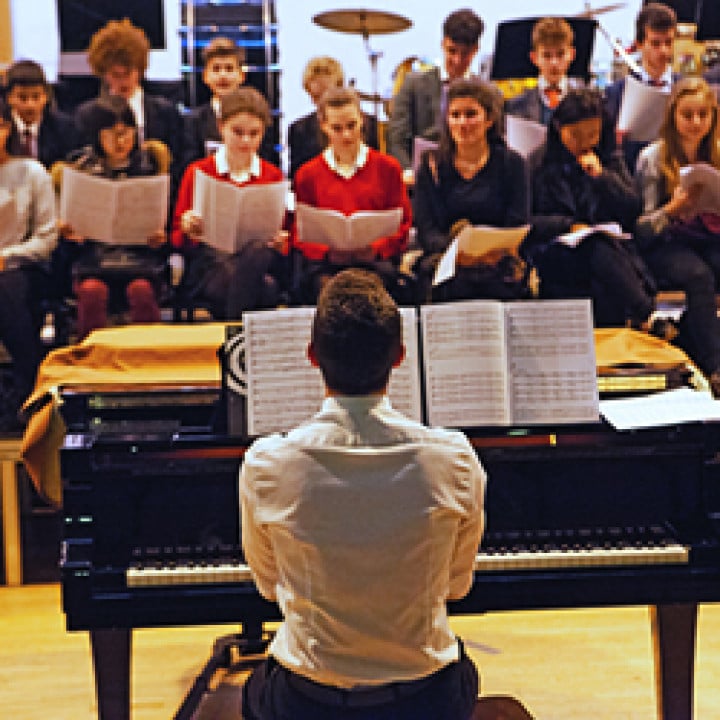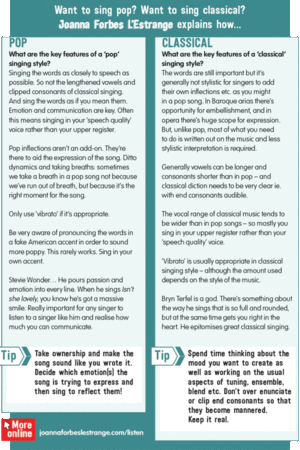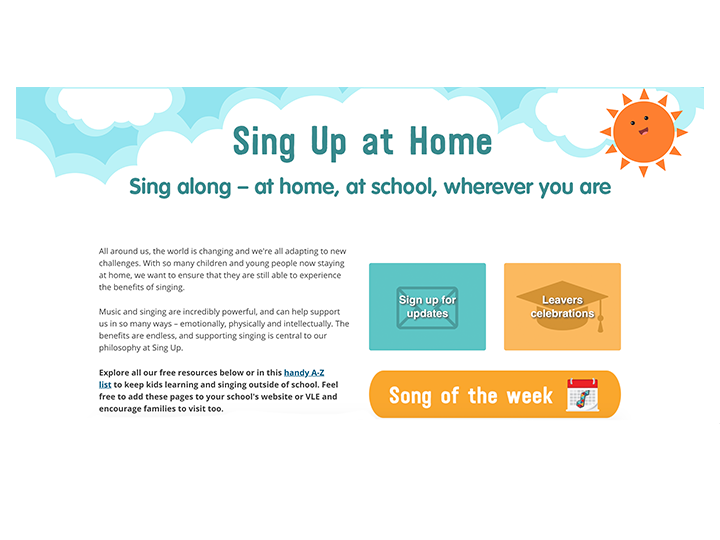
You can't sing a song with authentic style if you don't have the technique to adapt your voice to that style. You need an understanding of how the voice works and the ability to use it healthily—to access the full range of the voice. And then the full range of music.
Your voice is like a paintbox. And depending on the kind of music you want to sing, you can mix the tonal quality from all the colours to achieve the most authentic sound for that particular style. By playing with your voice and discovering what's in the paintbox, you can develop your techniques and versatility.
The body
All singers need to understand their body is their instrument. Whatever style you sing in, it's crucial your body supports your voice. How you stand, sit or move affects your ability to breathe and support the sound. Any tension in the body will result in constriction in the tone. And remember, as teacher you are the role model for being tension-free! Swing your hips... Shake the tension out...

Now you need to have an open throat. Whatever you're singing, you have to have a nice space in your throat where there's no constriction. Some singers are taught to think of a yawn before they sing to 'open the throat'. I find it works better to think of a silent laugh.
Posture is key to effective breathing —and therefore effective singing. That's all we really need to consider with primary age (4 - 11). At secondary (11- 18) it's different because students might be singing higher level songs—so they need to think about how they're breathing. So with primary it is just posture: open chest, relaxed shoulders, and good balance in the body. Breathing warm-ups which create stress—e.g. counting to eight and then 16—are counterproductive. If you get the kids sitting or standing well, guess what? They can breathe!
The voice
The most important vocal technique is learning to create good clear tone throughout the voice. The lower end, close to where we speak, is 'speech quality'. It's an easy sound that works well in many musical theatre songs and pop singing as it's a natural way to express words and communicate feeling. But, this quality cannot be pushed up beyond speech range because it becomes shouty, harsh, and uncomfortable. So we need to find our upper register—our 'tilt'. ALL singers must learn to find their 'tilt'. Otherwise they will be stuck in this lower range with only a breathy, feeble tone above it.
The colour
Now we can colour the voice by using different techniques:
'Twang' is an energetic, slightly nasal quality used in many pop songs and musical theatre numbers. When overdone it's the worst kind of Disney singing! But a little 'twang' in the mix creates brightness which certain styles need.
An 'aspirate' (breathy) sound should always be a choice and not just poor tone. Singing in an 'aspirate' way is exhausting and dries out the vocal folds. So it is not default! It may be fun to use in a scary or 'magical' song - as it creates a shimmer around the voice. Its whispering quality gives intimacy, too.
We hear 'sob' in classical singers or opera. The singers are keeping their larynx in a lower position than normal; holding their larynx down where we would sob from. It's a rich sound and creates a darker tone. We don't want to encourage primary children to 'sob' because their larynx needs to be free.
'Belting' is a completely different technique... It's shouting! And it's commonly used in rock and pop songs—songs like I want to break free. But it's dangerous because it can cause damage if done incorrectly. So no belting in primary. It is not 'speech quality' pushed higher. It uses a different way of breathing—it anchors the body—and it should be saved for the emotional climax of a song.
People still don't know how 'vibrato' really happens. It's not used in early music, but it's used a lot in opera. It's a sort of tremolo around the note that warms and sweetens the tone. Let that natural movement creep in. If you have one—you can't teach vibrato!
The communication
Diction and articulation are vital if we want the audience to hear our words. And a song is 50% words!
'Phrasing' is understanding the musical sentence. Where does it go? What do you want to emphasise? 'I will always love you'... Is 'love' or 'you' the most important word? Make the phrase what you want it to be. Give it movement; give it stress; take it on a journey. Phrasing is about getting both the music and words across - so try not to break either up with breathing.
Every voice has its own unique sound and we also have natural ranges that we feel more comfortable singing within. But by developing healthy vocal techniques - by opening up that paintbox and experimenting—we can explore, enjoy and perform convincingly in many styles. Perhaps pop... Perhaps classical...

 Lin Marsh is a composer, teacher and vocal coach from Oxfordshire. She has a particular passion for developing creativity in performance through integrated singing, drama and movement. Lin trains teachers- and is currently working as a World Voice Trainer for the British Council.
Lin Marsh is a composer, teacher and vocal coach from Oxfordshire. She has a particular passion for developing creativity in performance through integrated singing, drama and movement. Lin trains teachers- and is currently working as a World Voice Trainer for the British Council.
 Internationally renowned singer and choral trainer Joanna Forbes L'Estrange is based in London. Formerly MD of The Swingle Singers, she is known for her stylistic versatility and for performing/recording classical, jazz, pop, contemporary and commercial music with the world's top musicians.
Internationally renowned singer and choral trainer Joanna Forbes L'Estrange is based in London. Formerly MD of The Swingle Singers, she is known for her stylistic versatility and for performing/recording classical, jazz, pop, contemporary and commercial music with the world's top musicians.
Words by Bibi Lynch. Bibi is a writer and broadcaster (from The Guardian to BBC Radio London) who loves music.



